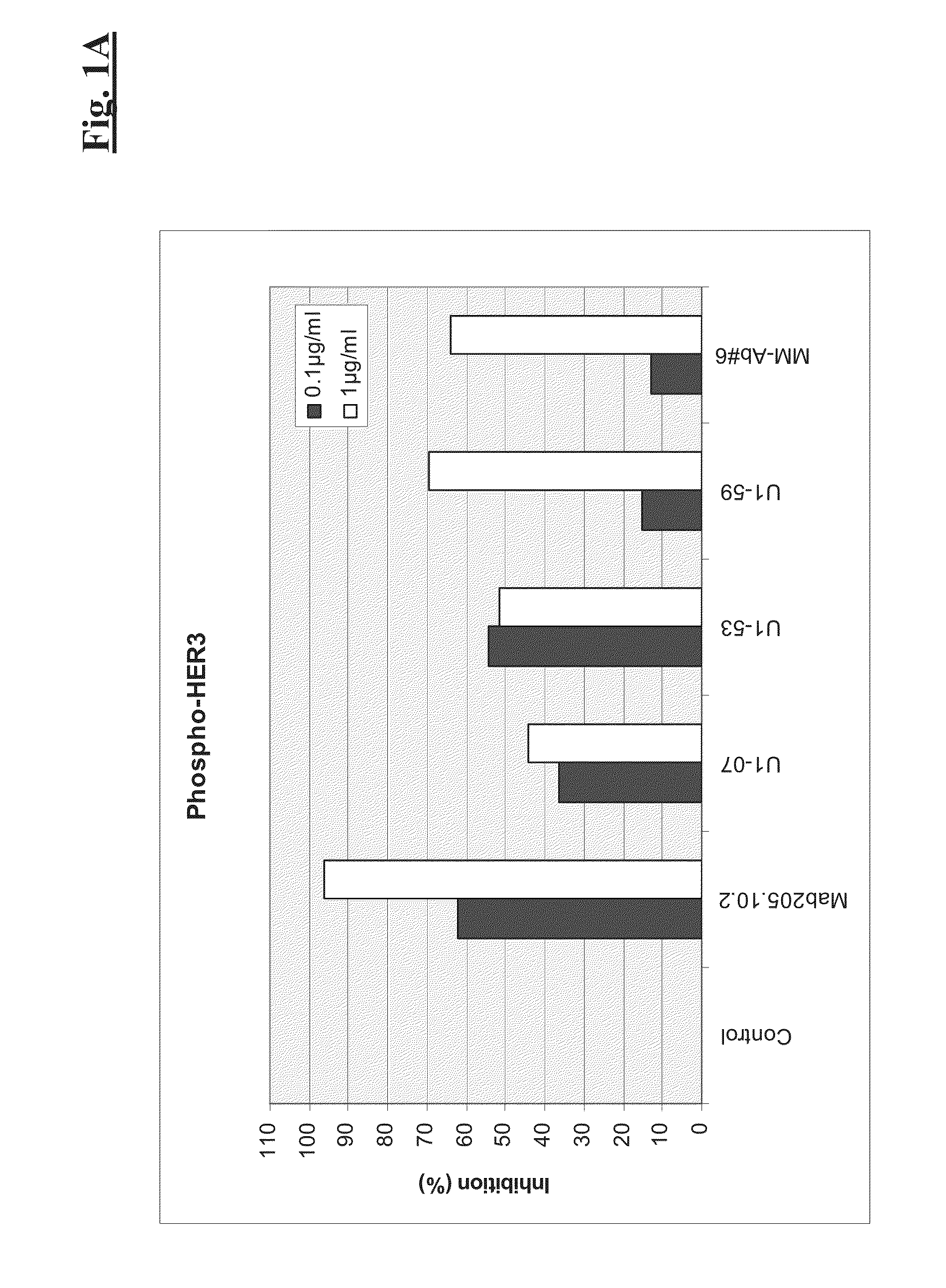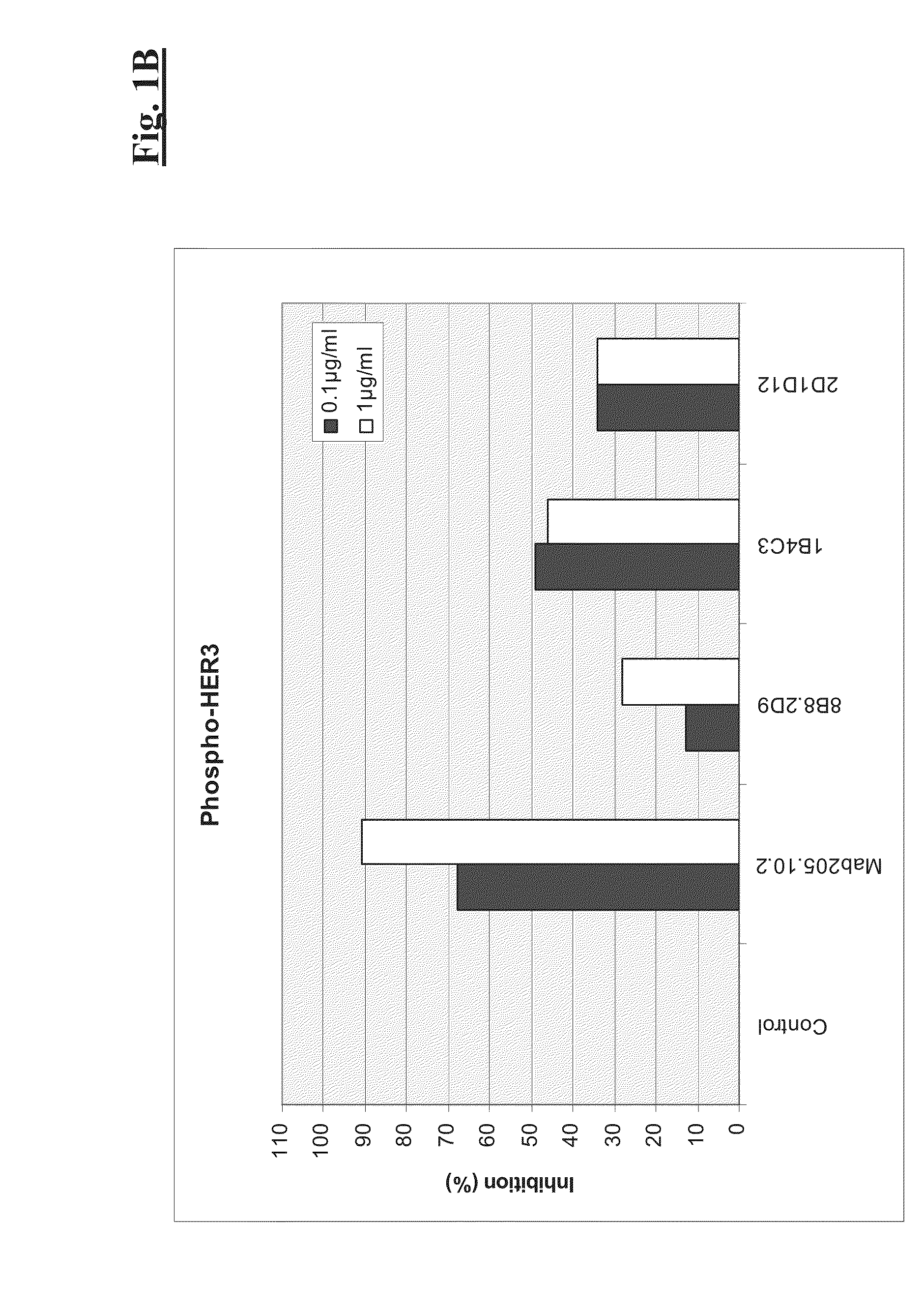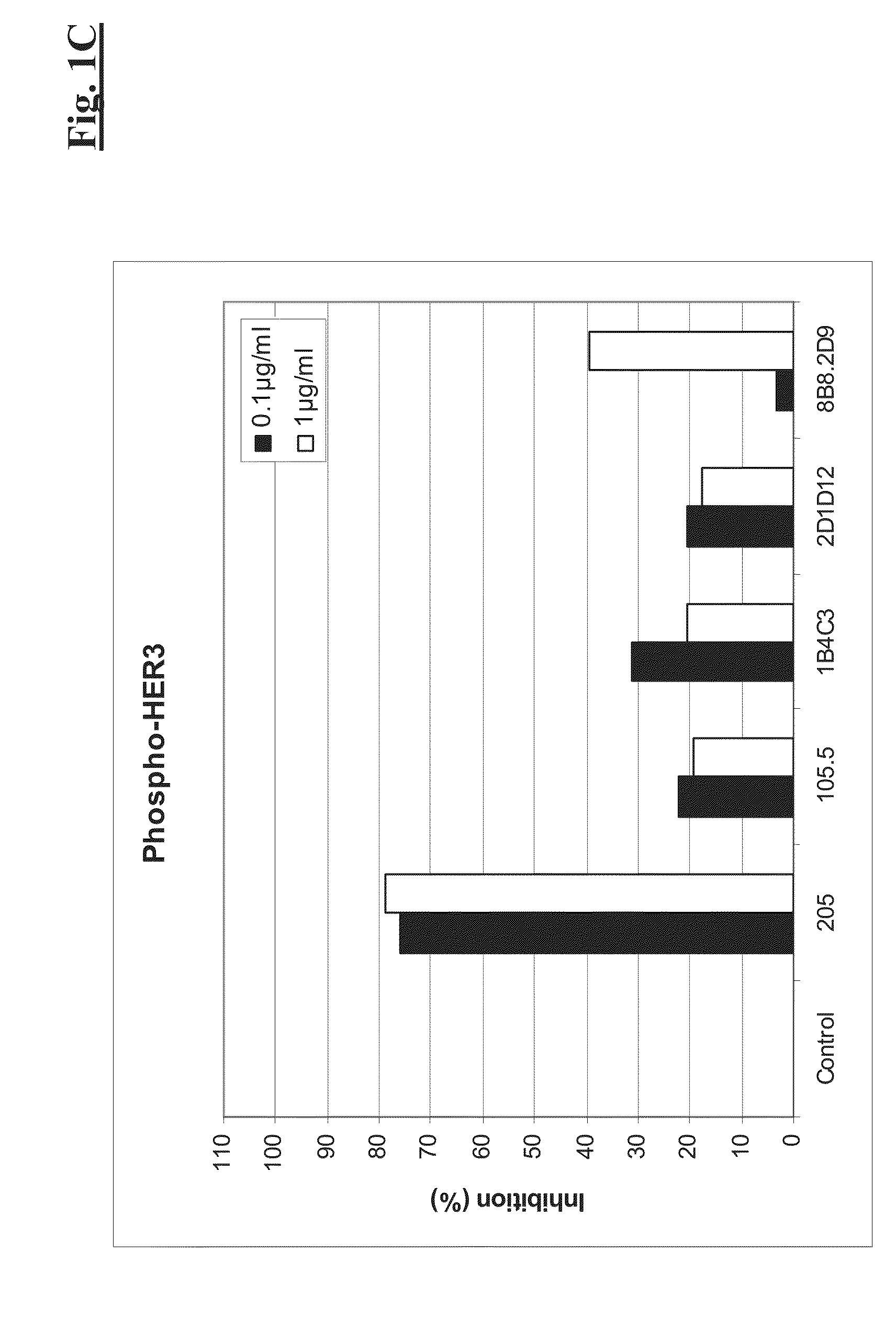Combination therapy of Anti-her3 antibodies
a technology of anti-her3 antibodies and conjugates, which is applied in the field of conjugation therapy of anti-her3 antibodies, can solve the problems of poor patient prognosis, correlates or associations of overexpression of egfr, and achieve the effect of inhibiting the dimerization of her2
- Summary
- Abstract
- Description
- Claims
- Application Information
AI Technical Summary
Benefits of technology
Problems solved by technology
Method used
Image
Examples
example 1
Immunisation
[0216]NMRI mice were immunized with hHER3-ECD (inhouse) and boosted with hu-HER3-ECD. The immune response was monitored by testing serum samples against the HER1 / 2 / 3-ECD-ELISA. Spleen cells from mice with sufficient titers of anti-HER3 immunoglobulin were frozen for later immortalization by fusion with mouse myeloma cell line P3X63 Ag8.653. One fusion was done and hybridoma supernatants screened by HER1 / 2 / -ECD-ELISA showing no cross-reacivity, but binding to HER3-ECD and anti-HER3 selective hybridomas were selected. The relevant hybridomas were cloned by single cell FACS sorting. Single cell clones from different hybridomas were cultured in vitro to produce antibody in tissue culture medium for characterization. Antibodies were selected by determining their ability to inhibit HER3 phosphorylation, AKT phosphorylation and tumor cell proliferation of MDA-MB-175 cells (see Examples below). From the obtained antibodies, one was further humanized to give the following antibod...
example 2
Binding Assays
[0218]a) Antigene Specific ELISA for Binding to Human HER3 ECD
[0219]Soluble human HER3 extracellular domain fused to Streptavidin Binding Protein (SBP) was captured on a sreptavidine plate. To define optimal binding of the antibody to SPB-CDCP1, 384-well polystyrene plates (NUNC, streptavidin-coated) delivered by MicroCoat, Bernried, Germany (ID-No. 1734776-001) have been coated with pure and stepwise diluted HEK293 supernatant (in BSA / IMDM buffer:100 mg / ml BSA Fraction V, Roche 10735078001, dissolved in Iscove's Modified Dulbeccos Medium). Using mouse a calibration curve of chimeric 205 antibodies the optimal dilution factor of the HEK293 supernatant in relation to the streptavidin binding capazity of the microtiter plate was identified. For the standard coating, SBP-HER3 containing HEK293 supernatant was diluted (between 1:15 and 1:40) and incubated overnight at 2-80 C (25 μl per well). Intensive washing of the microtiter plate is necessary to remove remaining unboun...
example 3
a) Inhibition of HER3 Phosphorylation in MCF7, FaDu and Mel-Juso Cells
[0226]Assays were performed in MCF7 and FaDu cells according to the following protocol: Seed cells with 500,000 cells / well into Poly-D-Lysine coated 6-well plate in RPMI1640 medium with 10% FCS. Incubate for 24 h. Remove medium by aspirating, incubate overnight with 500 μl / well RPMI 1640 with 0.5% FCS. Add antibodies in 500 μl RPMI 1640 with 0.5% FCS. Incubate for 1 h. Add HRG-1b (final concentration 500 ng / ml) for 10 min. To lyse the cells remove medium and add 80 μl ice cold Triton-X-100 cell lysis buffer and incubate for 5 minutes on ice. After transferring the lysate into 1.5 ml reaction tube and centrifugation at 14000 rpm for 15 min at 4° C., transfer supernatant into fresh reaction tubes. Samples containing equal amounts of protein in SDS loading buffer were separated on SDS PAGE and blotted by using a semi-dry Western Blot to nitrocellulose membranes. Membrans were blocked by 1×NET-buffer+0.25% gelatine fo...
PUM
 Login to View More
Login to View More Abstract
Description
Claims
Application Information
 Login to View More
Login to View More - R&D Engineer
- R&D Manager
- IP Professional
- Industry Leading Data Capabilities
- Powerful AI technology
- Patent DNA Extraction
Browse by: Latest US Patents, China's latest patents, Technical Efficacy Thesaurus, Application Domain, Technology Topic, Popular Technical Reports.
© 2024 PatSnap. All rights reserved.Legal|Privacy policy|Modern Slavery Act Transparency Statement|Sitemap|About US| Contact US: help@patsnap.com










